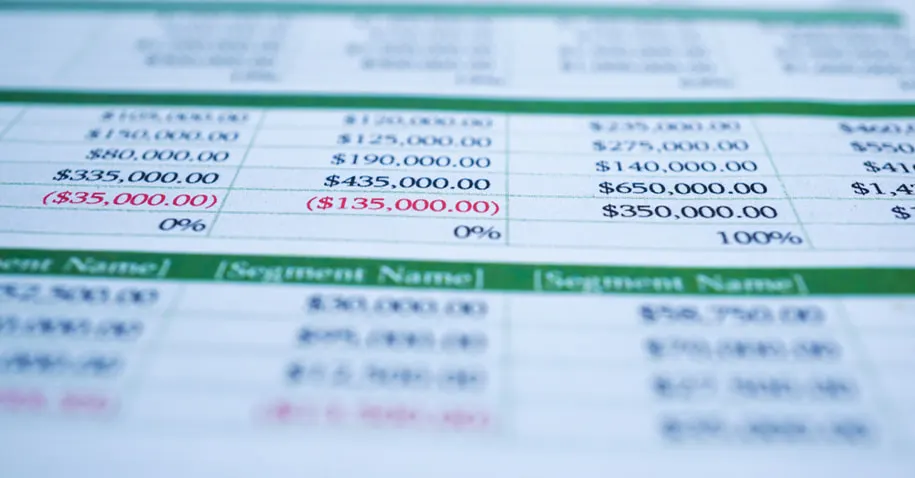Organizing financial control spreadsheets is a crucial step in managing your personal or business finances. A well-structured spreadsheet allows you to track your income, expenses, savings, and debts, giving you a clear view of your financial health.
With the right approach, you can improve your financial decision-making, identify areas for savings, and set achievable financial goals. Here’s a guide to help you organize your financial control spreadsheets effectively.

The Importance of Financial Control Spreadsheets – Financial Control
Financial control spreadsheets are vital tools for managing money because they provide an overview of your financial situation. Whether you are an individual looking to manage household expenses or a business owner tracking revenue and costs, spreadsheets can help you:
- Track Income and Expenses: See where your money is coming from and where it’s going.
- Monitor Savings: Set savings goals and track progress.
- Control Debt: Keep an eye on outstanding balances and interest rates.
- Create Budgets: Build and stick to a monthly or yearly budget.
- Identify Patterns: Spot trends in spending and areas where you can cut back.
Choosing the Right Spreadsheet Tool – Financial Control
Before you begin creating your financial control spreadsheet, it’s essential to choose the right tool. Popular spreadsheet applications include:
- Microsoft Excel: Offers powerful features and templates for financial management.
- Google Sheets: A free, cloud-based option that allows for easy collaboration and accessibility.
- Airtable: A more advanced, database-style tool that can handle complex financial tracking.
- Personal Finance Apps: Tools like Mint or YNAB (You Need a Budget) can integrate with spreadsheets for automated tracking.
While Google Sheets and Excel are the most commonly used tools, choose the one that best suits your needs and comfort level.
Organizing the Spreadsheet: Key Sections – Financial Control
A well-organized spreadsheet typically has several key sections to keep your finances easy to track and analyze. Below are the essential components you should include.
1. Income Tracker – Financial Control
Your income tracker helps you record all sources of income, whether it’s your salary, business revenue, side gigs, or investments.
- Columns to include:
- Date of receipt
- Source of income (e.g., salary, freelance work, dividends)
- Amount received
- Total income for the month
By tracking your income regularly, you’ll get a clearer picture of your cash flow and be able to budget more effectively.
2. Expense Tracker – Financial Control
The expense tracker is one of the most important sections of your financial spreadsheet. It helps you monitor how much money you’re spending and identify areas where you could reduce costs.
- Columns to include:
- Date of expense
- Category (e.g., housing, utilities, groceries, transportation, entertainment)
- Description (optional for more details)
- Amount spent
- Payment method (e.g., cash, credit card, bank transfer)
It’s helpful to divide your expenses into categories, such as “fixed expenses” (e.g., rent or mortgage) and “variable expenses” (e.g., groceries or entertainment), so you can see where most of your money is going.
3. Savings Tracker – Financial Control
A savings tracker helps you keep an eye on your short- and long-term savings goals, such as building an emergency fund, saving for a vacation, or investing for retirement.
- Columns to include:
- Date of deposit
- Goal or purpose (e.g., emergency fund, vacation)
- Amount deposited
- Remaining balance
- Target date or amount
By tracking your savings, you can assess whether you’re meeting your goals and make adjustments if necessary.
4. Debt Tracker – Financial Control
If you have outstanding debts, whether it’s student loans, credit card balances, or a mortgage, having a dedicated debt tracker is essential for managing repayments.
- Columns to include:
- Debt type (e.g., credit card, loan, mortgage)
- Total debt amount
- Interest rate
- Monthly payment
- Outstanding balance
- Payment date
- Paid this month
Tracking your debts will allow you to prioritize high-interest debts and make more efficient decisions regarding debt repayment.
5. Budget Overview
A budget overview is a summary sheet that provides an at-a-glance view of your monthly or annual budget, comparing planned income and expenses with actual figures. This section allows you to see if you’re staying within your financial limits or overspending.
- Columns to include:
- Category (e.g., income, housing, savings, debts)
- Budgeted amount
- Actual amount spent/received
- Difference (variance)
This sheet helps you assess whether you’re on track with your financial goals or if adjustments are needed.
6. Financial Goals
Setting specific financial goals helps you stay motivated and focused on your objectives. This section of the spreadsheet should outline your goals, timelines, and progress.
- Columns to include:
- Goal name (e.g., buy a house, pay off debt)
- Goal amount
- Target date
- Amount saved to date
- Remaining balance
You can use this sheet to track progress toward both short-term goals (like building an emergency fund) and long-term goals (like saving for retirement).
Key Formulas to Simplify Financial Tracking
To make your financial spreadsheet more effective, consider using a few basic formulas to automate calculations and save time.
SUM Formula
The =SUM() formula allows you to quickly calculate totals for categories, like total income, total expenses, and total savings. For example:
=SUM(B2:B10)will sum all amounts in cells B2 through B10.
IF Formula
The =IF() formula can help you create conditional statements. For example, you could use it to highlight whether you’re under or over budget for a particular category:
=IF(B2>C2, "Over Budget", "On Budget")would return “Over Budget” if the value in B2 is greater than C2, otherwise, it would return “On Budget.”
Variance Formula
To calculate the variance between your budgeted and actual spending, use the formula:
=B2-C2(where B2 is your budgeted amount and C2 is your actual spending). This will show whether you are over or under budget for that category.
Percentage Formula
To track how much of a goal you’ve reached, use the =B2/C2 formula (where B2 is the amount saved and C2 is the goal amount). This will give you a percentage of how close you are to achieving your goal.
Tips for Maintaining Your Financial Spreadsheet
To get the most out of your financial control spreadsheet, follow these tips:
1. Update Regularly
The key to a successful financial tracking system is consistency. Set aside time each week or month to update your spreadsheet with your latest income, expenses, and savings.
2. Keep It Simple
Avoid overcomplicating your spreadsheet. While it’s tempting to add a lot of categories and formulas, the most effective spreadsheets are often the simplest. Focus on what’s most important and build from there.
3. Use Colors and Conditional Formatting
Use colors to differentiate categories, highlight important data, or flag issues. For instance, you could use red to highlight overspending or green to mark a savings goal you’ve met. Conditional formatting in Excel or Google Sheets can make this process easier.
4. Back Up Your Data
Ensure your financial spreadsheet is backed up regularly to avoid losing important data. If you’re using Google Sheets, your file is saved in the cloud, but if you’re using Excel, consider saving a copy to a cloud storage service or an external drive.
5. Use Templates
If you’re new to spreadsheet organization, consider starting with a template. Both Excel and Google Sheets offer free templates for budgeting, tracking expenses, and planning finances. You can customize these templates to suit your needs.
Conclusion
Organizing financial control spreadsheets is a powerful tool for anyone looking to take charge of their finances. By creating clear sections for income, expenses, savings, debts, and goals, and using formulas to automate calculations, you can gain valuable insights into your financial situation. Regular updates and careful organization will help you make more informed financial decisions, allowing you to stay on top of your spending, save effectively, and work toward your financial goals with confidence.






